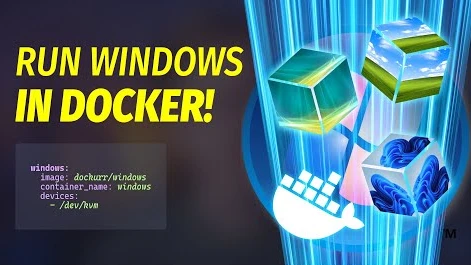Keeping Your Docker Containers Fresh with WUD
In today’s fast-paced DevOps world, running applications in containers is the norm. Docker has revolutionized the way we deploy and scale software, but managing those containers—especially ensuring they’re up to date—can be a manual and tedious task.
This is where WUD, short for What’s Up Docker, steps in as a game-changer.
WUD is a lightweight, open-source solution that continuously monitors your running Docker containers and alerts you when new versions of the base images are available. It saves time, ensures better security, and brings automation to your software maintenance workflow. If you’re running a homelab, hosting your own services, or managing production infrastructure, WUD is an essential tool in your DevOps toolbox.
🧠 Why Should You Care About Image Updates?
Let’s face it—container image updates often carry critical fixes:
- Security patches that close zero-day exploits
- Performance improvements that enhance your service responsiveness
- Bug fixes and new features that your applications benefit from immediately
Not updating means you’re running outdated, potentially vulnerable software. But manually checking all containers regularly is unrealistic. Automating this check is the smartest move—and that’s exactly what WUD offers.
🚀 Meet WUD: What’s Up Docker
WUD is a smart container update monitor. It inspects the Docker images behind your currently running containers and checks if newer versions are available in the registries. If it finds updates, WUD notifies you instantly—helping you take immediate action.
🔧 Built for Flexibility
WUD integrates beautifully with:
- Docker
- Docker Compose
- Private or public registries
- A wide range of notification platforms (email, Slack, MQTT, webhooks)
It supports custom triggers and regex filtering, giving you full control over how you track and react to image updates.
🌐 Web UI: Your Update Control Tower
The included web interface is clean, intuitive, and mobile-friendly. From a centralized dashboard, you can:
- View all running containers
- See the image version in use
- Get update availability in real-time
- Customize monitoring preferences
This turns WUD from just another background service into a powerful UI-driven monitoring assistant.
📦 Getting Started in 5 Minutes
Deploying WUD is surprisingly simple. Here’s a basic example using Docker Compose:
version: "3.3"
services:
wud:
image: fmartinou/whats-up-docker
container_name: wud
volumes:
- /var/run/docker.sock:/var/run/docker.sock
ports:
- "3000:3000"
environment:
- [email protected]
- WUD_TRIGGER_EMAIL_SMTP_HOST=smtp.example.com
- WUD_TRIGGER_EMAIL_SMTP_PORT=587
- WUD_TRIGGER_EMAIL_SMTP_USERNAME=your_username
- WUD_TRIGGER_EMAIL_SMTP_PASSWORD=your_password
Once it’s running, visit http://localhost:3000 (or your server’s IP) to access the web dashboard.
💬 Notifications: Choose Your Channel
WUD can send notifications via:
- Email: Ideal for personal servers or smaller teams.
- Slack: Integrates well with DevOps pipelines.
- MQTT: Perfect for IoT/automation setups.
- Webhooks: Trigger custom update workflows (like automatic redeploys or backups).
You can even set up multiple triggers per container.
🛡️ Stay Secure, Stay Updated
Running outdated containers can expose your system to vulnerabilities. WUD helps you avoid this by:
- Prompting early patching
- Monitoring containers 24/7
- Supporting multi-arch and registry-compatible images
It doesn’t replace update automation tools like Watchtower, but complements them with granular visibility before updates are applied.
🔥 Real-World Use Cases
Here are some great examples of WUD in the wild:
- 🔐 Self-hosted services: Running Pi-hole, Home Assistant, Nextcloud? Get alerts before your services become outdated or vulnerable.
- 👨💻 Development environments: Developers using Docker-based stacks can be notified of new base images (Node, Python, Java) for better consistency and performance.
- 🛰️ Production clusters: Ops teams can integrate WUD with CI/CD pipelines to schedule updates safely.
- 🚀 Homelab setups: Perfect for tinkerers and home sysadmins to maintain their containers easily.
🧩 WUD vs. Watchtower
| Feature | WUD | Watchtower |
|---|---|---|
| Web UI | ✅ Yes | ❌ No |
| Notification | ✅ Flexible | ✅ Email, Slack |
| Auto-updates | ❌ No | ✅ Yes |
| Transparency | ✅ High control | ⚠️ Can be automatic |
Use WUD for visibility, and Watchtower if you want automatic image pulls and container redeploys.
🤝 Community & Support
WUD is open-source and actively developed on GitHub:
🔗 https://github.com/getwud/wud
You’ll find extensive documentation covering everything from basic setup to advanced features, like authentication, registry credentials, and notifications via third-party services.
Got issues or feature ideas? Just open an issue and join the community discussions.
🧠 Final Thoughts
Keeping containers up to date should never be an afterthought. With WUD, you’re no longer flying blind when it comes to Docker image updates. Whether you’re a sysadmin, homelabber, DevOps engineer, or a curious tinkerer, WUD gives you real-time visibility and control over what’s running in your infrastructure.
Try it once—WUD will become your new best friend in Docker image hygiene.
✅ TL;DR
- WUD = “What’s Up Docker”
- Monitors Docker containers for image updates
- Notifies you via email, Slack, MQTT, or webhook
- Has a clean and powerful web UI
- Easy to set up and fully customizable
Keep your containers fresh and your system secure with WUD.







Post Comment